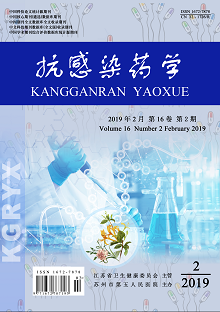Li Xiaoju, XU Fei, LIU Yang
Objective: To detect and analyze the mechanism of carbapenem resistance by imipenem resistant P. Aeruginosa (IRPA), and to study its molecular epidemiological characteristics, so as to provide a reference for the prevention and treatment of hospital IRPA infection. Methods: Clinical data from 2016 to 2017 IRPA strains in 80 strains were extracted and strains isolated (producting/non producing IRPA strains, 32 strains and 48 strains, respectively); analyzing of modified carbon black alkene inactivated test method (mCIM) and the method of modified Hodge and polymerase chain reaction (PCR) method to detect the carbapenem enzyme gene; its sequencing showed that positive was to produce/non carbon penicillium enzyme drug-resistant spectrum difference of IRPA strains, as well as analyzing different types of carbon penicillium enzyme resistant and epidemiological characteristics of the strain. Results: Of the 80 IRPA strains isolated, 32 (40.00%) were mCIM phenotype positive, and 15 (18.75%) were modified Hodge positive; the PCR results showed that 13 (16.25%) were VIM-2 gene positive, 19 (23.75%) were kpc-2 gene positive, and both NDM and oxa-48 genes were negative. The drug resistance rates of IRPA strains producing carbapenem to ceftazidime, cefepime, piperacilin-tazobactam, cefoperazone, sulbactam and amikacin were 87.50%, 87.50%, 68.75%, 68.75%, and 68.75%, respectively, which were significantly higher than those of non-carbapene-producing IRPA strains (37.50%, 35.42%, 22.92%, 22.92%, and 35.42%, respectively)(P<0.05). The results of MLST and PFGE typing showed that IRPA strains had 11 genotypes, mainly ST235/A, ST244/D and ST639/K, among which the enzyme-producing IRPA strains were mainly prevalent in ST235/A, ST235/G, ST244/D, ST639/K and ST1029/G. Conclusions: IRPA strains isolated in this region mainly produce VIM-2 and KPC-2 MBL, which were highly resistant to a variety of commonly used clinical antimicrobial agents. The detection and monitoring of enzyme-producing strains should be strengthened to prevent the spreading and prevalence of antimicrobial resistance of these strains.
